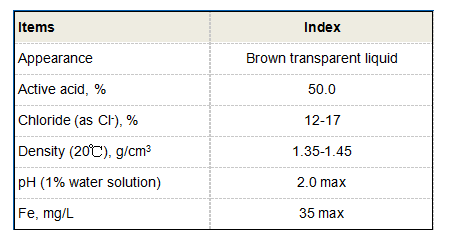chemical coagulation and flocculation water treatment
Chemical Coagulation and Flocculation in Water Treatment
Water treatment is a vital process that ensures the safety and quality of drinking water, particularly in urban areas where water sources can be contaminated. Among the numerous methods employed in water purification, chemical coagulation and flocculation are two of the most crucial steps for removing suspended solids and contaminants. These processes are essential in achieving clean water that meets health and safety standards.
What Are Coagulation and Flocculation?
Coagulation is the process by which chemicals are added to water to enable the aggregation of tiny suspended particles into larger clumps known as flocs. This often begins with the addition of coagulants, such as aluminum sulfate (alum), ferric chloride, or polyaluminum chloride, which neutralize the electrostatic charges on particles, allowing them to come together.
Flocculation follows coagulation and involves gentle mixing to encourage the newly formed flocs to agglomerate and grow larger. This process usually employs flocculants—polymers that help to enhance the binding of particles. The resulting larger flocs can then be more easily removed from the water through sedimentation or filtration.
Importance of Chemical Coagulation and Flocculation
The importance of these processes cannot be overstated. Coagulation and flocculation significantly improve water clarity by removing turbidity caused by sediment, silt, and organic material. Additionally, they play a crucial role in the removal of pathogens, organic compounds, and heavy metals, thereby safeguarding public health.
Removing suspended solids helps prevent the growth of toxins and hazardous microorganisms. This is particularly important in regions where waterborne diseases are prevalent. Furthermore, employing these techniques can help in treating water in industrial processes, swimming pools, and wastewater treatment plants, making it suitable for various applications.
Mechanism of Action
chemical coagulation and flocculation water treatment

The effectiveness of coagulation and flocculation relies on several physical and chemical mechanisms. Coagulation works on the principles of charge neutralization, where oppositely charged particles attract and combine to form larger particles or flocs. Additionally, destabilization of the colloidal particles occurs through mechanisms such as van der Waals forces, bridging, or charge neutralization.
Once formed, the flocs are moved into a flocculation basin, where gentle stirring allows for further growth of flocs. Here, the shearing forces are carefully controlled to avoid breaking apart the fragile aggregates. The efficiency of flocculation depends on factors such as the type and dosage of the chemicals used, the mixing speed, and the retention time.
Factors Affecting Coagulation and Flocculation
Several factors influence the effectiveness of coagulation and flocculation processes. The choice of coagulant and its dosage is crucial; too little can result in inadequate particle removal, while too much can lead to excessive sludge production and increased operation costs. Additionally, pH and temperature significantly affect coagulation efficiency. Most coagulants work better within specific pH ranges, meaning that careful monitoring and adjustment are often necessary.
Moreover, the nature of the water to be treated—such as its turbidity level, organic content, and the types of dissolved ions—can alter the coagulant choice and dosage. Regular testing and optimization are necessary to ensure effective treatment.
Conclusion
Chemical coagulation and flocculation are cornerstone techniques in modern water treatment systems. By converting small, suspended particles into larger aggregates, these processes enhance the removal of pollutants and pathogens, leading to safer drinking water and cleaner environmental conditions. As investigations into more sustainable and efficient methods continue, improved formulations and techniques may further refine these essential treatment strategies.
As we face increasing water scarcity and contamination challenges worldwide, the importance of effective water treatment processes like coagulation and flocculation will only grow. Continued innovation and research in this field are essential to ensure that safe, clean water remains accessible to all.
-
lk-319-special-scale-and-corrosion-inhibitor-for-steel-plants-advanced-solutions-for-industrial-water-systemsNewsAug.22,2025
-
flocculant-water-treatment-essential-chemical-solutions-for-purification-processesNewsAug.22,2025
-
isothiazolinones-versatile-microbial-control-agents-for-industrial-and-consumer-applicationsNewsAug.22,2025
-
scale-inhibitor-key-solutions-for-water-system-scale-preventionNewsAug.22,2025
-
organophosphonates-versatile-scale-inhibitors-for-industrial-water-systemsNewsAug.22,2025
-
scale-and-corrosion-inhibitor-essential-chemical-solutions-for-water-system-maintenanceNewsAug.22,2025





